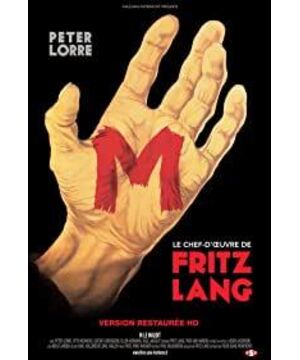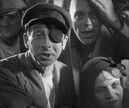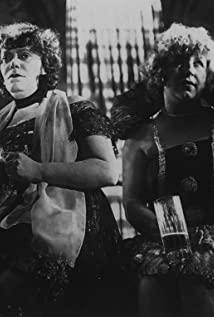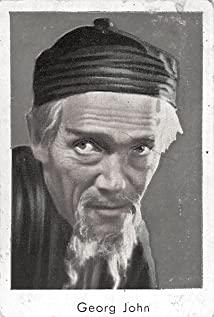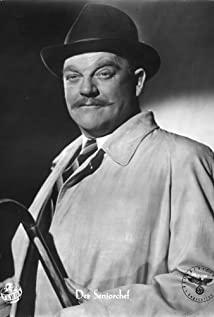According to a report by the BBC on the 23rd, Brazilian gangsters spontaneously ordered residents to curfew due to dissatisfaction with the local government's epidemic prevention work, prohibiting going out after 8 pm, and said that "if the government does not do the right thing, the gangster will do the right thing."
The gang took the initiative to help the police to maintain law and order. This is not the first of its kind in Brazil. As early as 90 years ago, the German gang joined the beggar gang to find the serial killer for the German police.
This incident was later adapted into a movie called "M is the Murderer". In 1931, the film was released to rave reviews, and it still occupies an important position in film history.
one,
The story takes place in the twenties and thirties in Germany.
The clock hits twelve, and a mother prepares lunch for her youngest daughter, Alice Beckman, when she gets home from school. The children next door came back one after another, but there was still no trace of Little Aisi. Wait and wait, more than an hour has passed, and little Aisi has not returned home.
The next day, Little Aisi made headlines as she became the eighth missing child in the city. Apparently it was a serial killing of children, it's just not known who the killer was.
The strange thing is that the murderer sent an anonymous letter to the newspaper, saying that the police could continue to investigate, and he did not intend to stop at the moment. This means that there will be more children's lives at risk.
For a while, the people in the city panicked.
Some people complained that parents should not let their children go to school at this time. Because they don't know who the murderer is, everyone is suspect. Neighbors and friends are suspicious of each other, fight each other over disagreements, and report each other. On the street, whenever you see an adult man talking to a child, others will attack them, as if everyone lost their minds all at once.
Because of complaints from residents, the mayor kept putting pressure on the police chief to give him a deadline to find the killer no matter what.
The director used all the police to carry out a carpet search of the city. Every tree and every grass was checked, and every candy store and coffee shop was not spared. He tried his best to find clues to solve the case, but with little success.
As a result, they turned to the crowd, conducted raids on all public places such as train stations, bars, brothels, etc., and brought back all those who did not have ID cards to the bureau.
This caused people to complain, complaining that the police were incapable of catching the murderer, but instead affected their normal lives.
Due to the ubiquity of the police, the gang's business has been devastated. If it goes on like this, they will soon have no food to eat, and the murderer is the initiator of all this. So the gang boss decided that they wanted to catch the murderer themselves.
two,
The gang and the police department have their own meetings to discuss ways to find the murderer, which is quite comical and interesting. From this, we can see the most common organizational principles in these two societies.
The police have an ambiguous view of the public. On the one hand, they need the public to provide clues, but on the other hand, they do not trust the public. In the end, they chose the advice of a criminal psychologist and searched for released mental patients with criminal records.
The gangster's solution is relatively straightforward. Because they themselves come from underground, they know the needs of underground people and can better organize underground forces. In the end, they decided to use the beggars, the most widespread and least visible civic organization, the Beggar Gang, to find the murderers.
In the beginning, beggars squatted in line every day to report what they saw and heard that day, but like the police, they found nothing.
Until one day, a blind man selling balloons heard a familiar whistle, and he recognized that the day when little Aisi disappeared, when a man bought her a balloon, it was the same melody he blew. The blind man told his younger brother, Herod, of this discovery, and Herod immediately ran to follow the whistleblower.
He saw the whistleblower with a little girl with a fruit knife in his hand. Herod wrote a "M" in his hand with chalk, pretended to bump into it, and printed an "M" on the whistleblower's back, and then all the gangsters and beggars knew that the "M" was killer.
This is the key scene of the film. The audience, like the gangsters, finally knows who the murderer is. In this short two minutes, director Fritz Lang led us to witness the great beginning of the film, which made the directors of future suspense films amazed and far behind.
Later, the murderer "M" saw his mark in the mirror, found that he was being followed, and hid in an office building.
Knowing that he was trapped in the building, the gang boss sealed off the entire building with everyone and equipment. They took control of the security guards in the building, carried out a carpet search of the entire building, and at the last moment when the police arrived, they caught the murderer "M" and walked away.
When the gang leads the people to capture the murderer "M", it is the most thrilling moment in the whole film. We can see how the gang members operate in an orderly manner, they carry professional tools and carry out efficiently, and all the people have a kind of high energy. And the murderer "M" was struggling to the death, like a frightened mouse, he kept digging into the ground, and was finally pulled out by everyone.
three,
So what will the gang do with their hated killer "M"?
They set up a private court to try the murderer "M" like a formal court, with a jury sitting under them, all of whom had committed crimes, and even had a lawyer for him.
Originally it was all just walking around, because no matter what, the gang decided to get rid of him. With the personal confession of the murderer "M", the situation changed. At this time, the film raised a question that has been debated for a hundred years, "Should the murder of a mentally ill person be sentenced?"
The murderer "M" confessed little by little. He was afraid of this terrifying and oppressive society. He couldn't escape, so he couldn't control his behavior. Only by killing can he relieve his pain. The more and more he spoke, the more frightened eyes corresponded to the people on the jury who unconsciously grasped the corners of their clothes and nodded frequently. Finally, the lawyer was also moved by him and began to defend him.
When the lawyer defended him passionately, seeing that more and more people agreed with him, a mother stood up, she retorted the lawyer, "You must have no children, and you don't understand the feelings of parents who have lost children." Then the people were suddenly hit by this sentence, rekindling the sense of justice, everyone shouted to kill him, and when they ran over to prepare to kill the murderer, the police came.
This scene shows how fragile our position as ordinary people is and how easily our hearts are deceived. This is the same as the "cyber police" on the Internet today. Whenever there is trouble, the mood is high and the reason is lost. I have to admit that sometimes lynching is more cruel than public execution. In this society, too many standards are not good. Without standards, it is easier to get out of control.
Finally, the policeman's hand was on the shoulder of the murderer "M", like a soothing gesture, "We will try you in the name of the law".
Four,
After all the dust settled, the people scattered, only the mothers who lost their children, the pain did not stop, because the dead children could not be resurrected.
Finally, "the law belongs to the law, and the people belong to the people".
Perhaps all ordinary people can do is to protect their children.
The great thing about this groundbreaking movie is that it doesn't let you cast aside the murderer or sympathize with the murderer. It makes you think about your own situation, because this society is basically not going to change, such things will definitely happen again, and it is still the same today after 90 years, so what should we ordinary people do?
A good movie, that's what it is, shows us a real world without telling us the answer. In other words, a good movie doesn't think for us, it inspires us to think for ourselves.
Here, I would like to thank director Fritz Lang for this film journey after 90 years.
If you like it, please pay attention to "Time and Space 1994" . I have been diligent recently and will be updated regularly, including movie reviews, book reviews, and music reviews.
View more about M reviews


